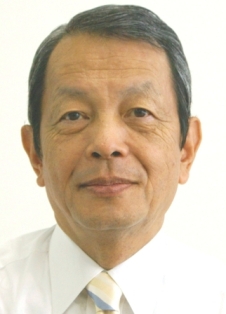Shojiro Asai: Difference between revisions
No edit summary |
No edit summary |
||
| (One intermediate revision by one other user not shown) | |||
| Line 1: | Line 1: | ||
== Biography == | == Biography == | ||
[[Image:Asai.jpg|thumb|right]] | |||
Shojiro Asai’s contributions in electron device technologies helped position Hitachi Ltd. as a leader in the [[Semiconductors|semiconductor]] field and benefited the industry as a whole. Dr. Asai was a leader in the development of sub-micon MOS devices. The 2-D numerical simulator for carrier transport his team built for this purpose was a world benchmark during the 1970s. He was instrumental in the development of electron beam mask making and direct writing, now indispensable tools for semiconductor manufacturing. He also led the efforts in dynamic random access memories with 3-D memory cells and microcontrollers with embedded nonvolatile memories and digital signal processor capabilities. These are now key components in computers, cell phones and personal navigators. | Shojiro Asai’s contributions in electron device technologies helped position Hitachi Ltd. as a leader in the [[Semiconductors|semiconductor]] field and benefited the industry as a whole. Dr. Asai was a leader in the development of sub-micon MOS devices. The 2-D numerical simulator for carrier transport his team built for this purpose was a world benchmark during the 1970s. He was instrumental in the development of electron beam mask making and direct writing, now indispensable tools for semiconductor manufacturing. He also led the efforts in dynamic random access memories with 3-D memory cells and microcontrollers with embedded nonvolatile memories and digital signal processor capabilities. These are now key components in computers, cell phones and personal navigators. | ||
| Line 5: | Line 7: | ||
Dr. Asai was a key leader in developing low-cost, tamper-resistant radio frequency identification (RF-ID) technology. It provides the ability to trace industrial and commercial goods throughout the entire product lifecycle. An [[IEEE Fellow Grade History|IEEE Life Fellow]], Dr. Asai is currently executive vice president of Rigaku Corporation, Tokyo, Japan. | Dr. Asai was a key leader in developing low-cost, tamper-resistant radio frequency identification (RF-ID) technology. It provides the ability to trace industrial and commercial goods throughout the entire product lifecycle. An [[IEEE Fellow Grade History|IEEE Life Fellow]], Dr. Asai is currently executive vice president of Rigaku Corporation, Tokyo, Japan. | ||
[[Category: | [[Category:Electron devices|Asai]] [[Category:Research and development|Asai]] | ||
[[Category: | |||
Revision as of 18:47, 24 February 2012
Biography
Shojiro Asai’s contributions in electron device technologies helped position Hitachi Ltd. as a leader in the semiconductor field and benefited the industry as a whole. Dr. Asai was a leader in the development of sub-micon MOS devices. The 2-D numerical simulator for carrier transport his team built for this purpose was a world benchmark during the 1970s. He was instrumental in the development of electron beam mask making and direct writing, now indispensable tools for semiconductor manufacturing. He also led the efforts in dynamic random access memories with 3-D memory cells and microcontrollers with embedded nonvolatile memories and digital signal processor capabilities. These are now key components in computers, cell phones and personal navigators.
Dr. Asai was a key leader in developing low-cost, tamper-resistant radio frequency identification (RF-ID) technology. It provides the ability to trace industrial and commercial goods throughout the entire product lifecycle. An IEEE Life Fellow, Dr. Asai is currently executive vice president of Rigaku Corporation, Tokyo, Japan.
